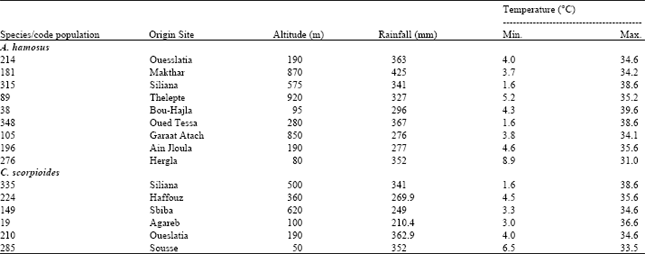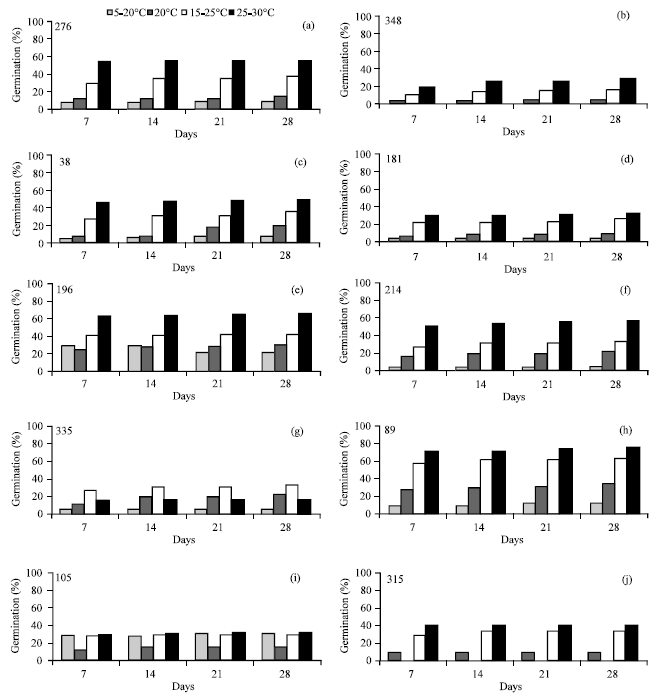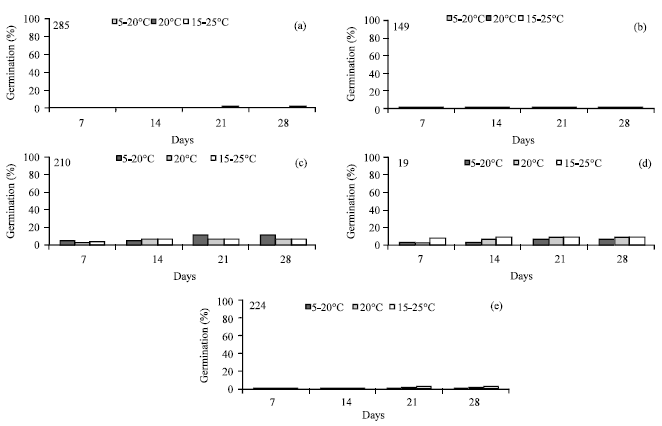Research Article
Germination of Astragalus hamosus L. and Coronilla scorpioides (L.) as Influenced by Temperature
Laboratoire des Productions Animales et Fourrageres, INRAT-2049-Ariana, Tunisie
H. Hassen et S. Benyoussef
Laboratoire des Productions Animales et Fourrageres, INRAT-2049-Ariana, Tunisie













